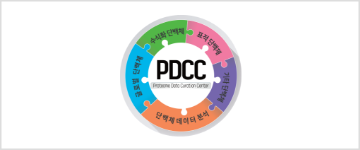2025 Fall
International Convention of PSK
2025 CONVENTION
Abstracts
Development of a simultaneous analysis method for three phthalates in cosmetics by HPLC
- Ji Eun Hong1, Ji-Hun Kim*1
- 1College of Pharmacy, Chungbuk National University
Phthalates are known endocrine-disrupting chemicals that have been prohibited as cosmetic ingredients due to their potential human toxicity. However, there remains a possibility of unintentional contamination during the manufacturing process or from plastic packaging materials. According to the “Regulation on Cosmetic Safety Standards” of the Ministry of Food and Drug Safety (MFDS, Korea), the total sum of DBP, BBP, and DEHP is limited to not more than 100 µg/g as an unintentional allowance level. In this study, a simultaneous analysis method for DBP, BBP, and DEHP was developed using high-performance liquid chromatography (HPLC). Acetonitrile was used as both the mobile phase and diluent, and a C8 column (250 mm × 4.6 mm, 5 µm) was employed. Method validation was conducted in reference to the “Guideline on Validation of Analytical Procedures for Pharmaceuticals.” The specificity test confirmed that all analytes were distinctly detected without interference from toner and cream cosmetic matrices. The linearity test showed excellent correlation with R² values above 0.999 within the range of 1–50 µg/mL. The limits of detection (LOD) and quantitation (LOQ) were 0.0254–0.1085 µg/mL and 0.0769–0.3287 µg/mL, respectively. Accuracy ranged from 94.01–105.29% for toner and 99.70–105.25% for cream, and precision was within 5.56% for both intra- and inter-day variations, meeting the validation criteria. Based on the validated method, monitoring was performed on ten toner and ten cream samples distributed in plastic containers. BBP was detected in one toner sample and DBP in one cream sample, both below the Korean regulatory limits. This study successfully established an HPLC-based method capable of complete separation and quantification of DBP, BBP, and DEHP, expanding the applicability beyond conventional GC or GC-MS methods. Its practical utility was demonstrated through analysis of commercial cosmetic products. Considering the detection of certain phthalates in distributed cosmetics, continuous monitoring and management are warranted.
Q&A
- There are no registered questions









































